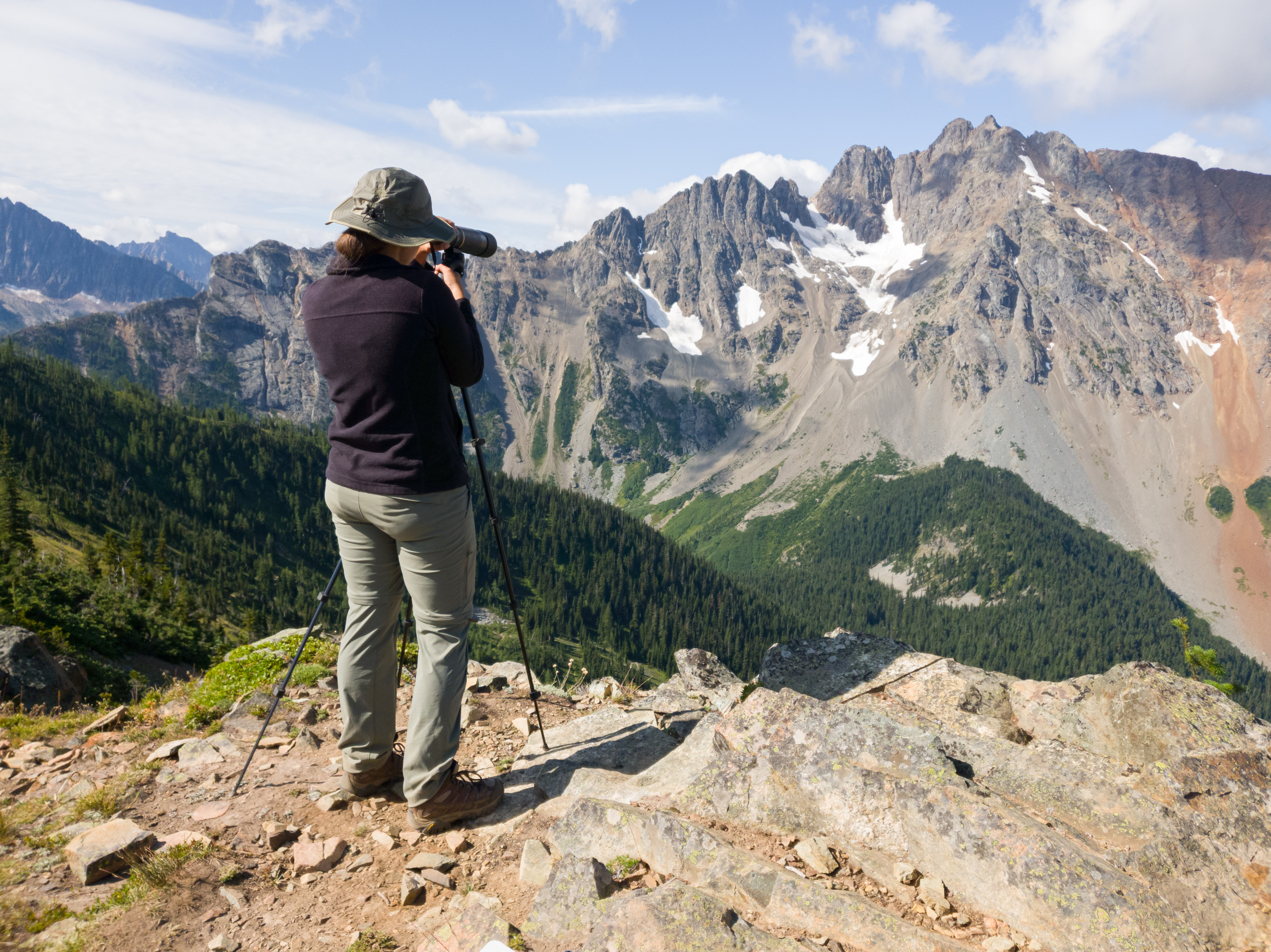All the efforts to move the goats from the Olympics to the Cascades mean nothing without understanding how those goats are doing after their release.
First, are they surviving at close to the rates of typical Cascades goats? It turns out there is some increased mortality associated with the stress of translocation, but on the whole, they are doing quite well.
How far are they roaming from their release sites? Wallin said one tracked goat had ambled more than 50 miles from its release site last summer, so they are obviously not averse to a good walk.
Even though many of the transplanted goats had been fitted with GPS collars, tracking them and gathering this data can only be accomplished by boots on the ground. Enter a stout cohort of fit Western students willing to undertake seven backpacking trips into the heart of the Cascades over the course of the summer, with each trip lasting about four days.
Duncan Mullen, a junior environmental studies major, was one of the four students who traipsed back and forth across the peaks of America’s Alps, and he quickly discovered that finding the goats, even with their collars, is achieved only through “some combination of good luck and bushwhacking persistence.”
“Mountain goats seem to be experts in picking the side of the mountain ridge that you aren’t on, and hoofing it over there,” Mullen says. “There were many times we bushwhacked along the side of a mountain following radio signals, only to have them disappear suddenly, presumably as our goat crossed over to another face of the mountain.”
Wallin said that the hard work of his students paid off with some quality sightings and data: At least three of last summer’s nannies had new kids, and co-mingling between Cascades goats and the “new arrivals” seemed to be occurring.
Mullen says that while the summer provided valuable technical skills in radio telemetry and field work, it also gave him a new understanding of how amazing the goats truly are.
“They live in such a tough environment, but have adapted so well to their surroundings. They make traveling over near-vertical cliff faces look easy. And they sure left us in the dust sometimes,” he says.
Next summer, a new cohort of students will track the goats in the Cascades, including those just released in late August near Washington Pass.
